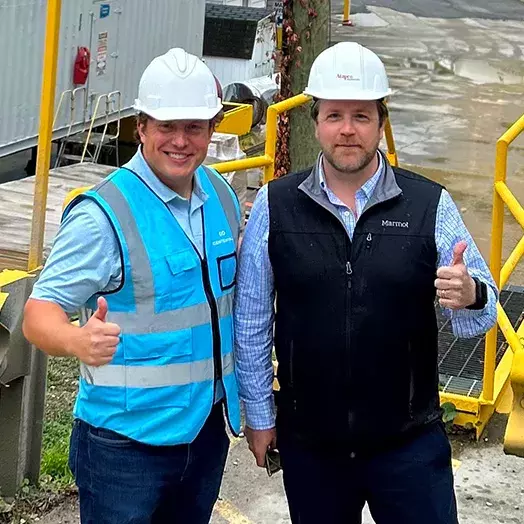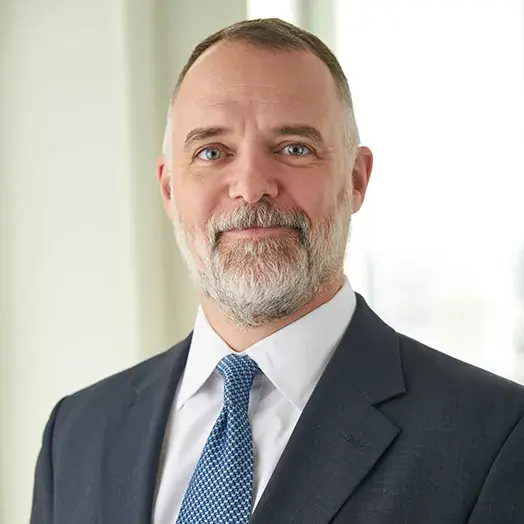Native Baltimoreans and Carey alumni band together on a project that is benefiting Baltimore-area businesses, consumers, and the environment.

Carey alumni work together to bring clean energy to Baltimore
A group of blue jays is often referred to as a “band.” Look skyward and you may see a small band of Johns Hopkins Blue Jays on area rooftops—two Baltimoreans who flew the coop to begin their careers but have since returned to the nest and reconnected on a project that is benefiting Baltimore-area businesses, consumers, and the environment.
Andrew Posil grew up less than a mile from Johns Hopkins’ Homewood campus.
“I attended dozens of Hopkins lacrosse games and was a camper at various Hopkins summer camps from elementary school through high school, so Hopkins always felt like a second home,” he said.
Michael Hutton went to high school with Posil. Hutton said he’d always been fond of the Johns Hopkins institution, since his mother was an employee for nearly 20 years.
Eventually, the two men headed elsewhere for their undergraduate educations, and started careers in real estate. Posil also worked in sales and hospitality. But like true blue jays, they each returned home to the Baltimore area when they realized they wanted more.
Hutton, through his mother and his community, was well acquainted with the power of the Johns Hopkins name and legacy. He landed at Johns Hopkins Carey Business School because the MS in Real Estate and Infrastructure program was flexible with his work schedule, and because of another critical asset.
“I’d seen the network it created for other colleagues,” said Hutton.
For Posil, the homecoming was even more celebrated. He enrolled in the program on the advice of his lacrosse friends and coaches, and ended up on the lacrosse team that beat Duke 12-11 in the NCAA Division I Championships in front of a record-breaking crowd of 48,443 fans in Baltimore at M&T Bank Stadium.
Nine years apart, the high school classmates graduated with masters degrees in Real Estate and Infrastructure. Today, Posil and Hutton find themselves working together—for different companies—on projects that are revitalizing Baltimore commercial real estate through solar energy.
What to Read Next

student experience
Top of the list: Carey is No. 1 in elite category with its fifth-straight year of gender parity in its full-time MBASolar installation projects and beneficiaries
Rooftop solar projects make use of otherwise unused space to funnel energy into the grid, providing clean, cost-effective power to local residents while simultaneously creating new income for the property owners. Posil is a principal in the real estate division at Centennial – an energy development company that focuses on solar energy. Hutton was, until recently, an asset manager at Broad Street Realty. Together, Centennial and Broad Street Realty completed construction on two grocery-store-anchored shopping center solar projects – Hollinswood Shopping Center in South Baltimore and Cromwell Field Shopping Center in Anne Arundel County.
There are three main beneficiaries to solar installations such as these, beginning with the property owner, who gets benefits from the additional income realized by leasing their roof to an energy development company such as Centennial.
Hutton explained how leasing the Cromwell property rooftops to Centennial provided a valuable income stream that the property owner was able to use for much-needed repairs. Likewise, the income generated from Centennial’s lease of the Hollinswood property rooftops created ancillary income that the property owner could use as needed.
The other beneficiaries of solar installations are consumers and the world in which they live.
“Consumers can subscribe to the project at a lower rate than the standard utility, while knowing that the electricity that their home or business is receiving is environmentally sustainable,” said Posil. “And, finally, the environment benefits as an increasing portion of our energy demands are supplied by cleaner sources of energy such as solar projects.”
Creating value and clean energy
Some key legislation has created economic incentives to grow the solar industry. The Maryland Community Solar Program establishes a marketplace for the energy produced locally. And the Inflation Reduction Act piggybacked on the Investment Tax Credit to locate energy projects in low- to middle-income communities and also to use system components produced in the U.S.
The Hollinswood and Cromwell Field projects, which total approximately 330,000 square feet or and produce an impressive 3.3 megawatts of energy combined system size, illustrate how solar can be used to create value for property owners on otherwise unused commercial roofs, while also producing clean and affordable energy for residents and businesses.
Posil said, “The growth of the solar industry is part of a multifaceted approach to slow and reduce the impact of climate change. While there is no silver bullet to solving climate change, solar can help meet the needs of our ever-increasing energy demands without putting additional carbon into our atmosphere.”
Look skyward and you may see this “band” of Blue Jays on Baltimore-area rooftops.


